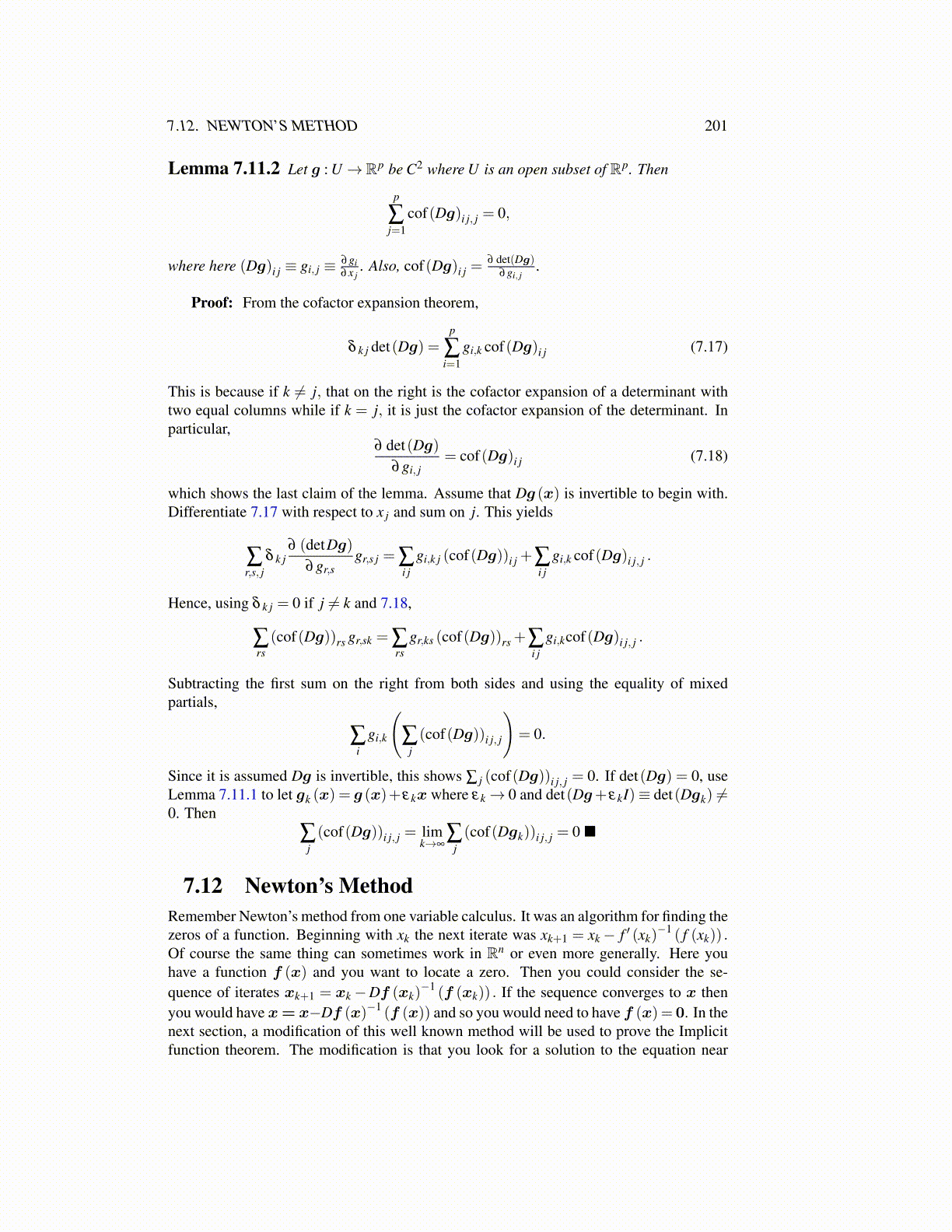
7.12. NEWTON’S METHOD 201
Lemma 7.11.2 Let g : U → Rp be C2 where U is an open subset of Rp. Then
p
∑j=1
cof(Dg)i j, j = 0,
where here (Dg)i j ≡ gi, j ≡ ∂gi∂x j
. Also, cof(Dg)i j =∂ det(Dg)
∂gi, j.
Proof: From the cofactor expansion theorem,
δ k j det(Dg) =p
∑i=1
gi,k cof(Dg)i j (7.17)
This is because if k ̸= j, that on the right is the cofactor expansion of a determinant withtwo equal columns while if k = j, it is just the cofactor expansion of the determinant. Inparticular,
∂ det(Dg)∂gi, j
= cof(Dg)i j (7.18)
which shows the last claim of the lemma. Assume that Dg (x) is invertible to begin with.Differentiate 7.17 with respect to x j and sum on j. This yields
∑r,s, j
δ k j∂ (detDg)
∂gr,sgr,s j = ∑
i jgi,k j (cof(Dg))i j +∑
i jgi,k cof(Dg)i j, j .
Hence, using δ k j = 0 if j ̸= k and 7.18,
∑rs(cof(Dg))rs gr,sk = ∑
rsgr,ks (cof(Dg))rs +∑
i jgi,kcof(Dg)i j, j .
Subtracting the first sum on the right from both sides and using the equality of mixedpartials,
∑i
gi,k
(∑
j(cof(Dg))i j, j
)= 0.
Since it is assumed Dg is invertible, this shows ∑ j (cof(Dg))i j, j = 0. If det(Dg) = 0, useLemma 7.11.1 to let gk (x) = g (x)+εkx where εk→ 0 and det(Dg+ εkI)≡ det(Dgk) ̸=0. Then
∑j(cof(Dg))i j, j = lim
k→∞∑
j(cof(Dgk))i j, j = 0 ■
7.12 Newton’s MethodRemember Newton’s method from one variable calculus. It was an algorithm for finding thezeros of a function. Beginning with xk the next iterate was xk+1 = xk− f ′ (xk)
−1 ( f (xk)) .Of course the same thing can sometimes work in Rn or even more generally. Here youhave a function f (x) and you want to locate a zero. Then you could consider the se-quence of iterates xk+1 = xk−Df (xk)
−1 (f (xk)) . If the sequence converges to x thenyou would have x= x−Df (x)−1 (f (x)) and so you would need to have f (x) = 0. In thenext section, a modification of this well known method will be used to prove the Implicitfunction theorem. The modification is that you look for a solution to the equation near